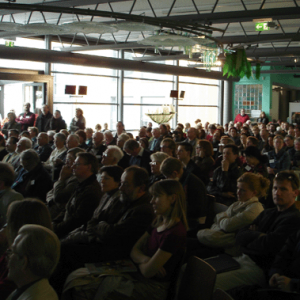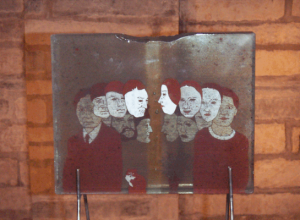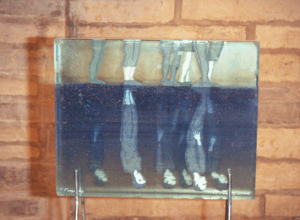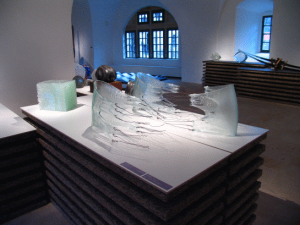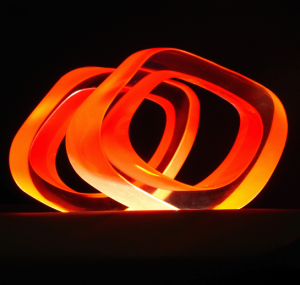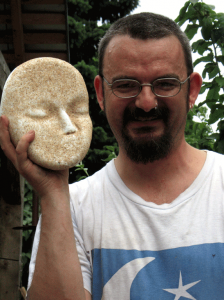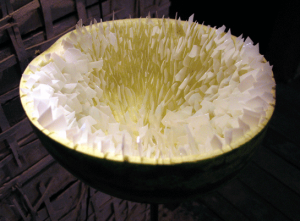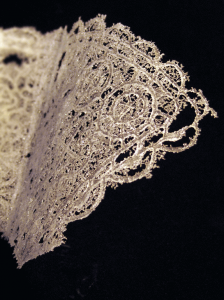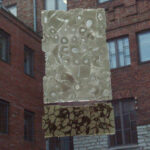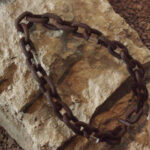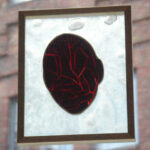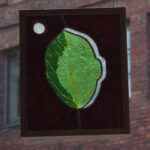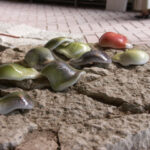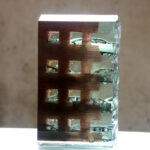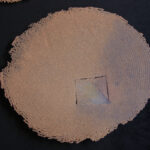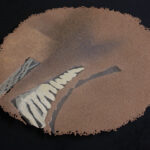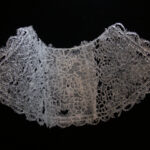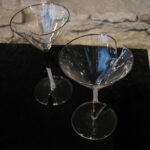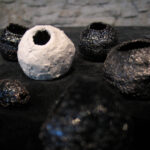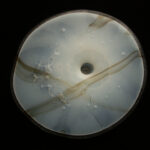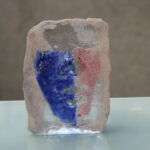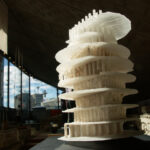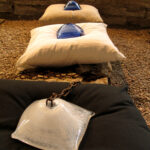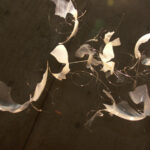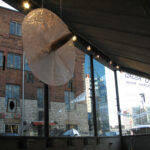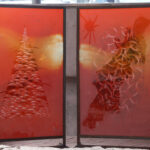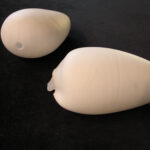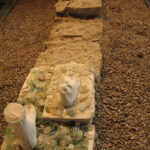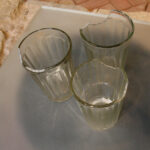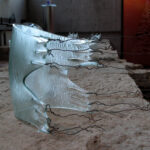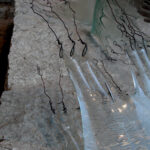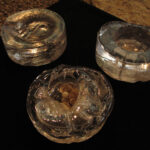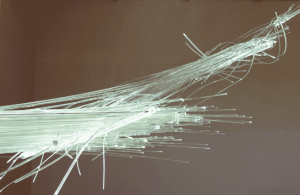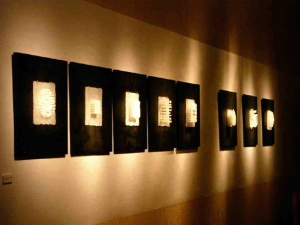Eeva Käsper represented Estonia at the Frauena Glass Symposium, April 6-9, 2006. Continue reading
2006 DAYS OF WHITE GLASS
July 15-22, 2006
Evald Okas Museum
Karja 24, Haapsalu, Estonia
Our symposion is held at the museum dedicated to a renowned Estonian painter Evald Okas. Glassblowing takes place in the open air studio in the museum yard.
During one week, participating artists have a chance to use the glassblowing furnace, and to create a piece for the White Glass show that follows the workshop.
The exhibition opens July 22 at the museum.
We would welcome your presentations, slide shows etc. – bring pictures with you!
Working conditions:
– Open-air studio, roofed, without walls.
– The furnace contains 80 kg of glass.
– The glass ranges from milky white to striped to clear (depending on how long it’s been in the furnace)
– Maximum thickness for cast pieces is 6 cm.
The museum would like to choose one piece from every participant for its permanent collection.
Lodging information:
– very comfortable hotels in Haapsalu;
– a bit less comfortable rooms at the Evald Okas Museum.
Hotel contacts:
http://www.promenaadi.ee/index.php?lang=eng
http://www.hot.ee/hostelendla/hosten.html
http://www.framare.ee/index.php?go=hotel
http://www.haapsaluhotel.ee/eng2.htm
http://www.hermannus.ee/index_eng.htm
http://www.kongohotel.ee/index_eng.html
More:
http://www.visitestonia.com/index.php?page=9&;action=show_search&database=5&search=true&text=®ion=4&county=11&type=0
2006 Rait Prääts – Like Day and Like Night
2006 Estonians in Coburg Glass Prize 2006 exhibition
2006 Conference MEETING POINT I – TALLINN and International Exhibition of Glass Students’ Works DISCOVERY
April 19 – May 17, 2006
Kullo Gallery, Tallinn, Estonia
In 2006/2007 the 70th anniversary of professional glass art in Estonia is celebrated.
70 years ago, in 1936/37, a workshop of glass, the predecessor of today’s department of glass of the Estonian Academy of Arts, was established at the then State Industrial Arts School in Tallinn. Continue reading
2006 Reactive Glass River in EU Parliament by Meeli Kõiva
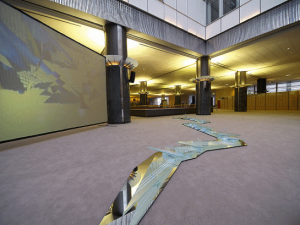 In the end of February, glass and light exhibition “Reactive River” by Meeli Kõiva was held in the European Parliament in Brussels. The exhibition was dedicated to the 88th anniversary of the Republic of Estonia. In the exhibition, Meeli Kõiva-Vällo demonstrated her 15 meter long glass installation which, in association with innovative light fluxion, gave an amazing result. An abstract video made by the artist supported the compostition of glass and light. The Estonian composer Margo Kõlar had composed a special opus for the exhibition in Brussels. Continue reading
In the end of February, glass and light exhibition “Reactive River” by Meeli Kõiva was held in the European Parliament in Brussels. The exhibition was dedicated to the 88th anniversary of the Republic of Estonia. In the exhibition, Meeli Kõiva-Vällo demonstrated her 15 meter long glass installation which, in association with innovative light fluxion, gave an amazing result. An abstract video made by the artist supported the compostition of glass and light. The Estonian composer Margo Kõlar had composed a special opus for the exhibition in Brussels. Continue reading
2005 Days of White Glass: memories
DAYS OF WHITE GLASS IN HAAPSALU
3rd International Hot Glass Symposium
Evald Okas Museum, August 16-23, 2005
Last week,the glass artists of Estonia had the pleasure of welcoming colleagues from around the world. The third hot glass workshop, initiated by Kai Koppel, lasted for a week and culminated with a glass show on the museum’s second floor. The exhibit, which stays open till Aug.14, presents a selection of pieces that were created during the workshop before a live audience, and some previously executed works. Continue reading
2005 WHITE GLASS ON DISPLAY
The Haapsalu Days of White Glass came to a traditional finale with an exhibition at the Evald Okas Museum. The best of works created during the international symposium are on display, giving an overall impression of emotion and spontaneity, at least in the eye of a participant. The show records moments of the recent intense play with fire and hot glass. Continue reading

